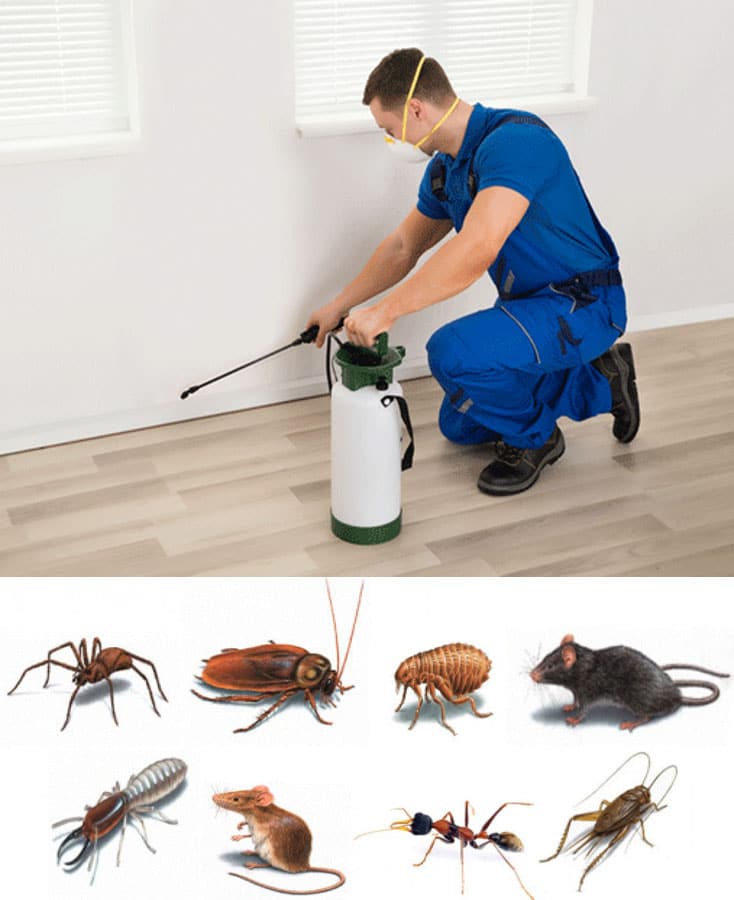Professional A1 Charlotte Bed Bug Exterminator - Quality Service Guaranteed
Professional A1 Charlotte Bed Bug Exterminator - Quality Service Guaranteed
Blog Article
Bed Insect Treatment Break Down: Comparing Chemical Vs. Non-Chemical Solutions
In the world of pest control, particularly when managing the consistent issue of bed pests, the option between chemical and non-chemical treatment remedies can be a critical one. Both approaches use distinct advantages and downsides, affecting factors such as effectiveness, safety factors to consider, and total cost. By analyzing the nuanced information of each approach, a more clear understanding of which course to go after in addressing a bed insect problem can be obtained.
Effectiveness of Chemical Therapies
Chemical treatments for bed insect invasions have been widely identified for their potent and fast efficacy in getting rid of these pests. When considering the performance of chemical treatments, it is essential to recognize that they can provide a fast and extensive service to a bed bug issue.
Furthermore, chemical therapies have the advantage of offering recurring effects, indicating that they can remain to get rid of bed pests also after the first application. This residual action is particularly valuable in combating any possible re-infestations. Additionally, the rapid action of chemical therapies can bring alleviation to individuals encountering severe bed insect problems, allowing them to gain back control of their living rooms promptly.
Security Worry About Chemical Solutions
When utilizing chemical options for bed pest therapy is ensuring the safety of occupants and the environment,One vital element that needs cautious consideration. While chemical treatments can be effective in eradicating bed bugs, they might posture dangers otherwise managed appropriately. One of the primary safety and security interest in chemical remedies is the prospective harm they can trigger to human health and wellness. Exposure to certain chemicals made use of in bed insect treatments can lead to respiratory system problems, skin irritation, or other unfavorable responses, particularly in individuals with pre-existing conditions or sensitivities. In addition, incorrect application or dosage of chemical pesticides can result in harmful residues sticking around in the cured area, posing long-term wellness dangers to occupants.
Additionally, the ecological effect of chemical options is another significant consideration. Some pesticides made use of in bed insect treatments may be damaging to advantageous pests, wildlife, and communities if they leach right into the dirt or water systems. It is necessary to utilize chemical therapies deliberately, following safety standards, and considering less hazardous choices to alleviate these risks and guarantee the reliable and risk-free management of bed pest infestations.
Advantages of Non-Chemical Approaches
Taking into consideration the potential safety issues and environmental effect connected with chemical solutions for bed bug treatment, exploring non-chemical methods provides an appealing option with a number of unique benefits. Non-chemical techniques use a more secure choice for families, specifically those with pet dogs, youngsters, or people conscious rough chemicals. These strategies remove the threats of direct exposure to toxic compounds, lowering the potential for unfavorable wellness effects. Furthermore, non-chemical therapies are eco pleasant, as they do not add to air or water air pollution, making them a lasting choice for parasite control.
Furthermore, non-chemical options can be effective in targeting bed insects, including hard-to-reach locations where chemical therapies might not penetrate - A1 pest control services charlotte. Methods such as heat treatment, vacuuming, steam cleaning, and bed mattress encasements supply detailed removal without the usage of dangerous chemicals.
Limitations of Non-Chemical Treatments

In addition, non-chemical treatments commonly require multiple applications to attain effective obliteration. This can be time-consuming and may not constantly ensure complete elimination of all bed insects and their eggs, especially in hard-to-reach or hidden places.
In addition, the success of non-chemical therapies heavily counts on appropriate implementation and thoroughness, which can be challenging for people without specialist know-how. Poor application of non-chemical methods might result in incomplete removal, resulting in persistent invasions and the requirement for extra treatments.
Consequently, while non-chemical therapies have their advantages, it is important to acknowledge these constraints and consider them when establishing one of the most reliable strategy for taking care of bed pest problems.
Price Contrast: Chemical Vs. Non-Chemical Options
Offered the constraints linked with non-chemical therapies, a crucial aspect to assess in the context of bed bug management is the price contrast between chemical and non-chemical choices. Chemical treatments usually involve the application of pesticides by specialists, which can vary from $250 to $900 per space, depending upon the severity of the problem and the dimension of the location to be dealt with. In contrast, non-chemical therapies like warmth treatment or steam can be extra expensive, with costs varying from $1,000 to $6,000 for a whole home. While the initial cost of chemical therapies may appear lower, numerous therapies may be needed to completely eliminate the invasion, potentially boosting the total cost. On the other hand, non-chemical alternatives might provide visit site a much more lasting and environment-friendly service, although they can be cost-prohibitive for some individuals. Inevitably, when considering the price of bed bug therapy choices, it is essential to consider the in advance expenditures against the performance and long-term sustainability of the selected method.
Verdict

Thinking about the possible safety and security concerns and environmental effect connected with chemical options for bed bug treatment, discovering non-chemical methods offers a promising option with numerous distinct advantages.Provided the restrictions associated with non-chemical treatments, an important element to examine in the context of bed pest management is the price comparison in between chemical and non-chemical choices. In comparison, click resources non-chemical treatments like warmth treatment or steam can be more costly, with expenses varying from $1,000 to $6,000 for an entire home. While the preliminary price of chemical therapies might appear lower, multiple treatments may be needed to fully get rid of the problem, possibly boosting the general cost.In final thought, when comparing chemical and non-chemical bed pest treatment choices, it is crucial to consider performance, safety and security, advantages, limitations, and price.
Report this page